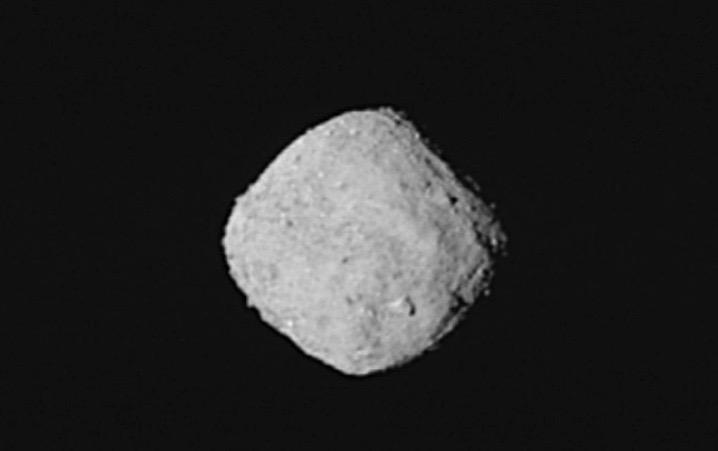Diamond Asteroids: How Bennu and Ryugu Got Their Fancy Shapes
There are diamonds in the sky, and they've been cut naturally.
The striking diamond shapes of the space rocks Ryugu and Bennu — the targets of the sample-return missions Hayabusa2 and OSIRIS-REx, respectively — apparently result from the near-Earth asteroids' rubble-pile composition, scientists said.
"We think they're very loose aggregates. They're not solid through and through," Melissa Morris, OSIRIS-REx deputy program scientist at NASA Headquarters in Washington, D.C., said during a webcast "Science Chat" on Wednesday (Nov. 7). "And so, as they rotate, you can actually basically spin things out and create almost that top shape." [OSIRIS-REx: NASA's Asteroid Sample-Return Mission in Pictures]
Both Ryugu and Bennu are also likely rich in organic molecules, the carbon-containing building blocks of life as we know it. Despite such similarities, however, the two rocks are far from clones. For example, Ryugu, at about 3,000 feet wide (900 meters), is much bigger than the 1,650-foot-wide (500 m) Bennu. And the former asteroid's surface is of fairly uniform brightness, whereas Bennu sports a diversity of light and dark patches, Morris added.
The Japan-led Hayabusa2 mission arrived in orbit around Ryugu in late June and has already dropped three landing craft onto the asteroid. Two of these surface explorers, the tiny hopping rovers MINERVA-II1A and MINERVA-II1B, remain operational today. The other one, the shoebox-size MASCOT lander, operated for more than 17 hours on Ryugu last month — slightly longer than originally planned.
The $150 million Hayabusa2 mission will deploy yet another hopping lander, MINERVA-II2, in the relatively near future, if all goes according to plan. And the mission's mothership itself will swoop down to collect samples from Ryugu, which are scheduled to come to Earth in a special return capsule in December of 2020.
OSIRIS-REx, meanwhile, is closing in on its target. The $800 million NASA probe will arrive at Bennu on Dec. 3, then slip into orbit around the space rock on Dec. 31. OSIRIS-REx will study the asteroid for more than two years and also collect a sizeable sample, which will land on Earth in September of 2023. (OSIRIS-REx won't deploy any mini-landers onto the space rock, however.)
Breaking space news, the latest updates on rocket launches, skywatching events and more!
The chief goals of Hayabusa2 and OSIRIS-REx (which is short for "Origins, Spectral Interpretation, Resource Identification, Security-Regolith Explorer) align nicely. Both missions aim to shed light on the solar system's early days and the role that carbon-rich asteroids such as Ryugu and Bennu may have played in helping life get going on Earth.
The missions have subsidiary objectives as well, as OSIRIS-REx's full name suggests. That mission should also help researchers learn about the forces that shape potentially hazardous asteroids' paths through space and about the resource potential of carbonaceous space rocks, among other contributions, NASA officials have said.
The two mission teams have already collaborated considerably, and they will continue to work together in the future, Morris said.
"It's going to be fascinating to compare and contrast these two different missions and their results," she said.
Mike Wall's book about the search for alien life, "Out There," will be published on Nov. 13 by Grand Central Publishing. Follow him on Twitter @michaeldwall. Follow us @Spacedotcom or Facebook. Originally published on Space.com.

Michael Wall is a Senior Space Writer with Space.com and joined the team in 2010. He primarily covers exoplanets, spaceflight and military space, but has been known to dabble in the space art beat. His book about the search for alien life, "Out There," was published on Nov. 13, 2018. Before becoming a science writer, Michael worked as a herpetologist and wildlife biologist. He has a Ph.D. in evolutionary biology from the University of Sydney, Australia, a bachelor's degree from the University of Arizona, and a graduate certificate in science writing from the University of California, Santa Cruz. To find out what his latest project is, you can follow Michael on Twitter.


